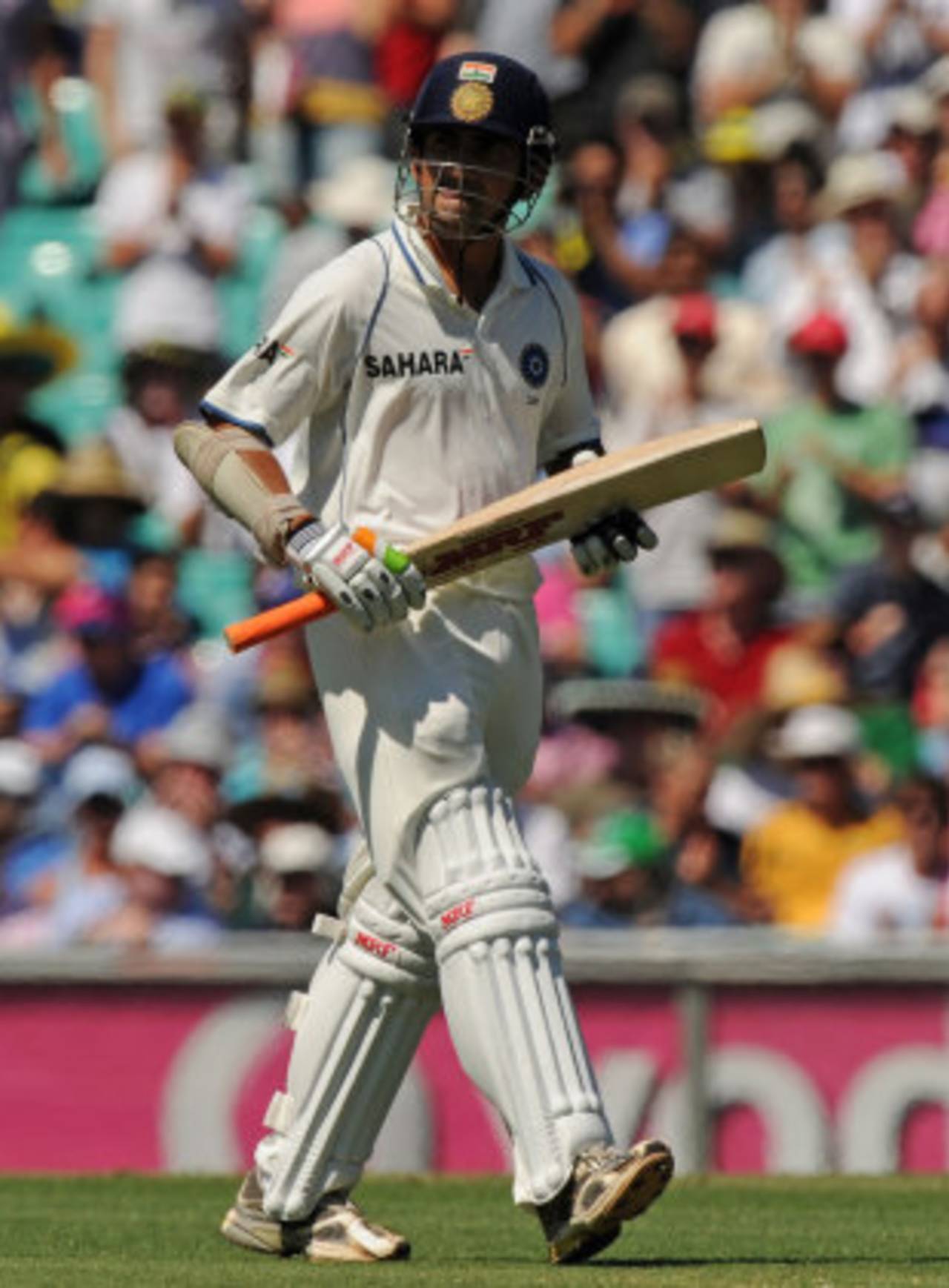Gambhir facing his toughest test
India's struggles with the bat in Australia start at the top, with the form of their opener Gautam Gambhir
Sambit Bal
03-Jan-2012

Gautam Gambhir was dismissed for a duck in the first over of the Sydney Test • AFP
India's batting troubles on this tour can no longer be wished away as another case of a traditional slow start. It must be viewed as a larger pattern, carrying on from their catastrophic summer in England where, barring one man, their top order failed to cope with the moving ball, both in the air and off the pitch. This series is only three innings old, and unlike in England, India have the bowling attack to respond in kind, but even the great bowling teams of the past required their batsmen to set up Test wins.
And unlike in England, where they were set back by injuries and lack of preparation, India can offer no excuses. They brought their top assembly; they had a couple of warm-up games; those who wished to, came here earlier; and Australia, fresh from their shock defeat against New Zealand, looked the more unsettled team. For the first time in the history of their cricket, India started a tour of Australia as favourites.
But as in England, a trio of fast bowlers, bowling aggressive and consistent lengths and moving the ball a shade, have put a much-vaunted batting line up under pressure. Apart from Sachin Tendulkar, who doesn't have the runs to show for the form he has been in, none of India's specialist batsmen have found any rhythm. In fact, most of them have given the appearance that it was only a matter of time before a ball came along with their name on it.
No one has symbolised this better than Gautam Gambhir. Earlier this summer another left-hand opener became a dead certain new-ball victim and lost his place after four eerily similar dismissals. Chris Martin merely needed to walk in with the ball for Phil Hughes to edge it somewhere to Martin Guptill. Gambhir has carried the same inevitability so far. Only that he has been more democratic, bestowing his wicket to all three quick bowlers in equal measure. Three innings, three edges, one each to Ben Hilfenhaus, Peter Siddle and James Pattinson.
Gambhir's first-over dismissal today was embarrassing. For nearly an hour yesterday, he practiced leaving the ball as Trevor Penney, India's fielding coach, simulated outswing with the sidearm throwing stick that is a rage these days with international cricket teams. But he hardly gave himself an opportunity to put it to practice.
The first ball was so far outside off that even Gambhir couldn't have considered wafting at it. The second one was at the stumps and he patted it down. But against the third, a delivery that merely slanted away with the right-armer's natural angle, Gambhir conjured a dab to midwicket, his wrists rotating to give the shot direction, and the bat face closing before the ball arrived. When he is going well, this is a shot that gives him a strike-rotating option, but not presenting the full face of the bat to the third ball of the innings was perhaps a reflection of Gambhir's state of mind.
It is well documented that Gambhir hasn't scored a hundred in his previous 32 innings. During this period he has averaged 28.50 and his career average fell well below 50. But even in this relatively fallow period, there were three tough half-centuries, including the match-saving one in the final innings in Cape Town at the start of the year, demonstrating heart, application and the ability of bat through difficult periods. Gambhir was never likely to match the purity and quality of batsmanship of his famed colleagues, but it was his character that the team valued. And during his golden run, which spanned from mid 2008 to the end of 2009, he worked around his limitations to reel off eight hundreds, including a match-saving marathon in Napier that lasted 436 balls.
All batsmen go through fallow periods, but Gambhir's problems are exacerbated because his biggest weakness is best exploited by the new ball, from which he can expect no respite. Unlike his opening partner Virender Sehwag, who cares for no half measures and whose bat deals in ferocious straight lines, Gambhir's bat draws varying angles, often coming at 45 degrees at the ball. He is an ideal partner to Sehwag because his nifty dabs and nudges create the perfect options for singles. They produce edges too, but Indian conditions, where the ball often dies before reaching the cordon, are far more forgiving than those in Australia.
Gambhir's major challenge on pitches where the ball nips around at pace and with bounce is to make both technical and mental adjustments. His natural game revolves around manipulating the ball with the deflection of the bat, either guiding it with an open face or tucking it to leg with a closed one. It's an unusual method for an opening batsman, who is traditionally expected to deal with the new ball either with a straight bat or through abstinence. The England bowlers either found a way through his gate, or had him lob catches with an open face. The Australians, who have adopted the English length with dramatic results, are merely continuing with strategy.
That the Indian innings featured four ducks was the surest sign of the script having gone horribly wrong for a team opting to make first use of the pitch on a sunny day. But none was more debilitating than the first one. The Indian batsmen have a stiff challenge ahead: for Gambhir, it is the stiffest of his career.
Sambit Bal is the editor of ESPNcricinfo